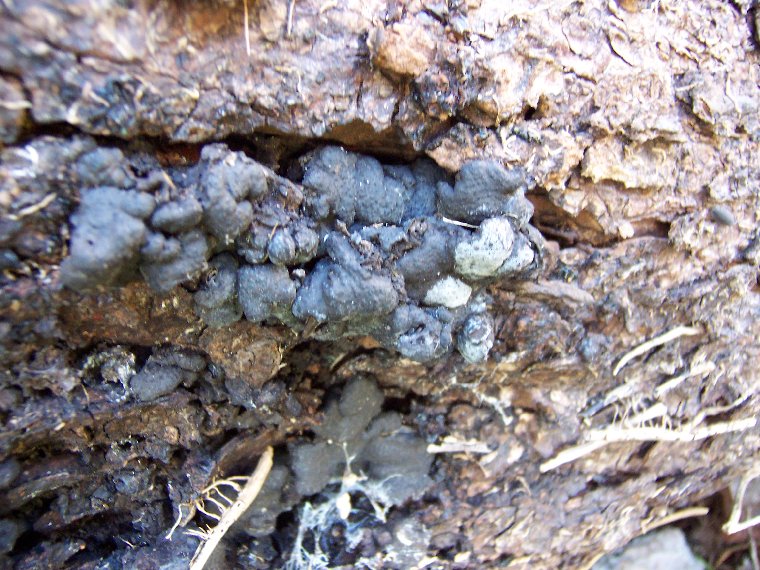Hi JFC
We have a few conker trees at the front of our property - but one fewer tha a year ago! Back in August on a quiet Sunday morning before we'd even got up we heard an odd sound - a bit like masses of gravel being poured into a bin. A few minutes later we were dragged into the world of wakefulness by the newpaper deliver man saying that one of the trees had fallen across the road! Fortunately we had access to tractors and heavy lifting machinery and all was cleared by 9:30
The base of the tree seemed spongy and rotten yet the foliage looked fine. We contacted our local tree surgeon who diagnosed an attack of Ustulina deusta - a fungus that attacks the structure of the cellulose and lignin of the wood and transforms it into a brittle structure that fractures like ceramic.
Most of the wood at the base I would describe as lacking a coherant structure and only when pointed out to me could I see the little black fruiting bodies of the fungus surrounded the base of the tree - like little bits of carbon. The thing is that they were at ground level covered by vegetation. Although a potential danger for many trees, this fungus is not easily spread - it makes its way in through wounds in the trunk or roots.
The internal srtucture of the timber shows a number of black and dark lines. Further up the trunk it seems fine - I'm keeping some bits to practice turning, but most will end up as fuel in the wood burning stove.
We were concerned about our other trees and had them checked out. One if them has a bracket fungus Rigidoporus ulmarius about three feet from the ground. However the tree seems sound and we have been advised to monitor it on a yearly basis - mind you we did have the crown reduced as it hung well over the road. Although the name indicates that it lives on Elm, it is not very fussy and any tree (almost) will do.
The tree surgeon was extremely knowlegdable and said he had been called to more failed horse chestnuts than usual and it seemed to be mainly fungal infections caused/spread or exacerbated by bark boring beetles and he had a number of trees that he was monitoring - several of which were showing signs of stress by reduced or wilted foliage.
I'm was hoping to make a few Christmas presents from the fallen timber but that will have to go on hold as I have managed to break my leg and any mobility is extremely curtailed. I can't put any weight on the leg ofr at least another six weeks! When I do manage to get to the workshop I'll have a play and see what the timber looks like after turning.
MisterFish






